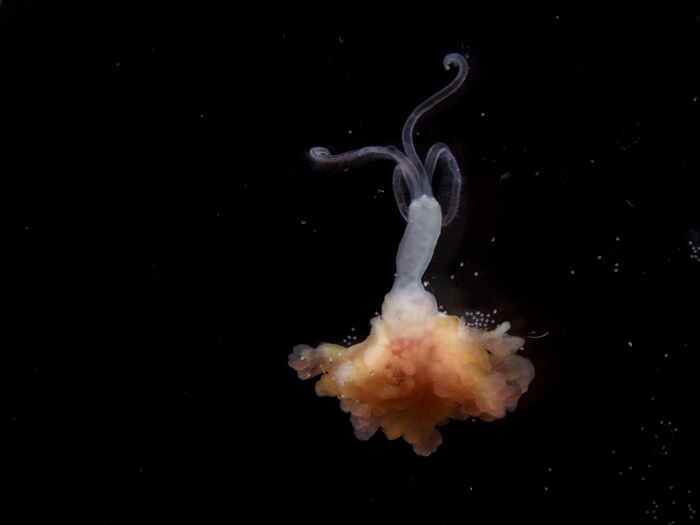How 'Zombie Worms' Have Sex in Whale Bones

So-called zombie worms are eyeless, mouthless, bone-boring creatures that live inside decaying whale carcasses that have fallen to the ocean floor. The worms are surprisingly diverse and widespread, considering that they make their homes in some of the most isolated places on the planet. But a new study sheds light on how the sex strategy of the strange-looking creatures has helped them expand their reach.
Members of the genus Osedax, the worms were first discovered in 2002 off the coast of California in an underwater valley called the Monterey Submarine Canyon. They feed by digging rootlike structures into bone to access fats, oils and nutrients from the skeletons that they can then absorb. Though they were thought to specialize in whale bones, recent experiments showed that the worms also took to the skeletons of tuna, cow and other animals, suggesting they have a more general diet of vertebrate bones.
Female zombie worms grow to about 1 inch (3 centimeters) long, but males are nearly microscopic. They are only about 1/20th of an inch (1 millimeter) long, and hundreds of them live inside a gelatinous tube covering part of the female; males' sole purpose is to fertilize the females' eggs, researchers say. [The 10 Weirdest Animal Discoveries]
This size difference is a key part of the reproductive strategy of zombie worms, the new study shows. In lab experiments using the species Osedax japonicas, a team of Japanese researchers found that the females started to spawn eggs — and then did so continuously — just six weeks after the worms settled into the tight quarters of their skeletal home.
"This rapid sexual maturation of females, alongside the male dwarfism which was observed, enables the worms to reproduce effectively in the food-rich, but highly isolated habitat of whale bones," the researchers wrote in a paper published online last month in the journal Naturwissenschaften.
What's more, the bone-eating worm larvae can swim actively for at least 10 days before settling on bones on the ocean floor. This ability could explain how the species has managed to colonize different environments rather quickly, even though its habitats are isolated. At least five species are known today, and they are found in the eastern and western Pacific and in the north Atlantic.
"Our findings provide essential information on the reproductive strategy of Osedax worms," study researcher Norio Miyamoto, of the Japan Agency for Marine-Earth Science and Technology, said in a statement. "Osedax japonicus are a promising model organism with which to address the evolution and development of these so-called bone-eating worms."
Sign up for the Live Science daily newsletter now
Get the world’s most fascinating discoveries delivered straight to your inbox.
Email Megan Gannon or follow her @meganigannon. Follow LiveScience on Twitter @livescience, Facebook& Google+. Original article on Live Science.










